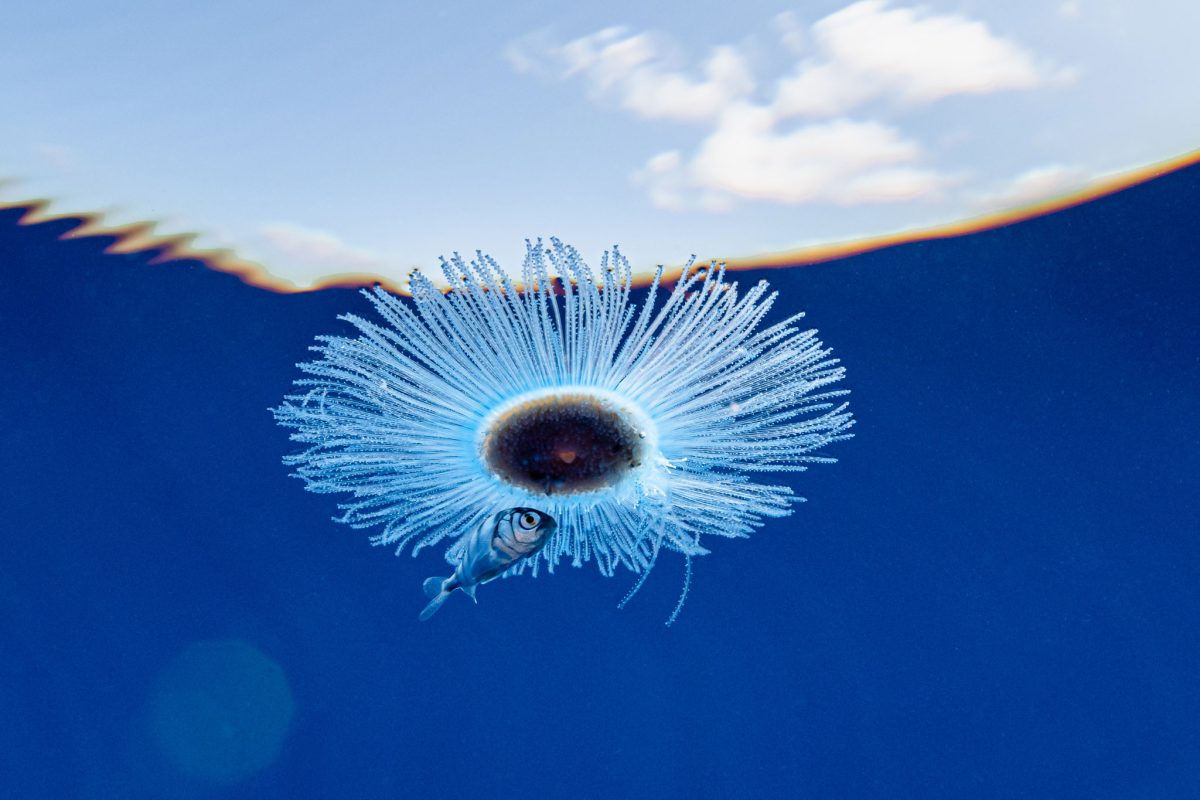One Great Shot: Gimme Shelter
In the open ocean, where shelter is rare, young fish find safety under stunning blue hydroids.
Article body copy
The blue button (Porpita porpita) is a diminutive yet exquisite hydroid, typically reaching no more than three centimeters in diameter. The animal is made up of a colony of zooids, which serve various functions necessary for its existence—some are devoted to self-defense, others snag food, and others are for reproduction. Blue buttons inhabit the pelagic realm of the ocean and spend their lives floating at the surface.
Exploring off the coast of Costa Rica in the eastern Pacific Ocean, we spotted what looked like bits of plastic floating at the surface. But cued by the perfectly circular float at the animal’s center, a closer inspection revealed these extraordinarily beautiful creatures.
On this occasion, I found a juvenile fish, most likely a species of jack, under a particularly large blue button. Fish in the open ocean, especially juveniles, often seek shelter under anything found floating.
The association between blue buttons and juvenile fish was shown in a 1963 paper that described how Malabar trevally panicked when removed from their hosts and returned as swiftly as possible. Even more intriguing, the juvenile trevally showed an attachment to a specific blue button, returning over and over again to the same one. This research was conducted in the Indian Ocean, and blue buttons can be found circumglobally in tropical seas. To the best of my knowledge, this photograph is the first showing the association between a juvenile fish and a blue button in situ and the first to show the association in this location and with this fish species.

